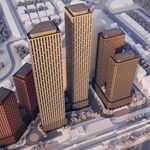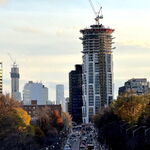B
building babel
Guest
There's that house on Broadview near Riverdale Avenue that is thought to be a very early nineteenth century log house, later renovated. The owner started ripping out walls and investigating it about ten years ago ( I think his name was Gilpin ), and he got some news coverage. I don't know if the true age of the house was ever resolved though.




